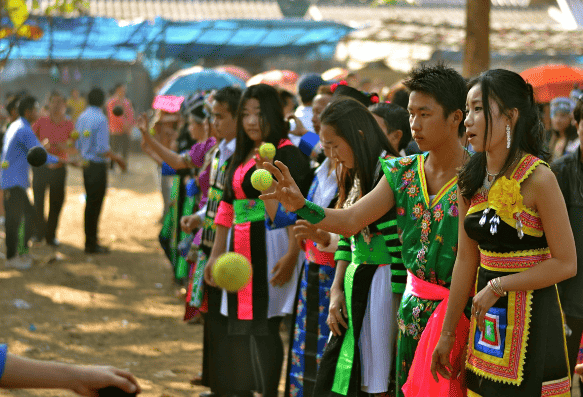Hmong traditions: The past and in 2023
Table 1: Article Outline Table 2: Article Introduction Brief Overview of the Hmong People Have you ever wondered about the rich tapestry that makes up the world’s diverse cultures? Today, let’s embark on a fascinating journey into the world of the Hmong—a unique ethnic group primarily residing in China, Vietnam, Laos, and Thailand. Picture a…
Table 1: Article Outline
- Introduction
- Brief Overview of the Hmong People
- Importance of Tradition in Hmong Culture
- Hmong New Year
- Overview
- Traditional Attires
- Rituals and Dances
- The Art of Story Cloth
- The Craftsmanship
- Cultural Significance
- Hmong Music
- Traditional Instruments
- Styles and Themes
- Shamanism in Hmong Culture
- Beliefs and Practices
- Role of the Shaman
- Marriage and Family Traditions
- Courtship
- Wedding Rituals
- Family Structures
- Food and Culinary Practices
- Common Ingredients
- Traditional Dishes
- Language and Oral Tradition
- Importance of Language
- Oral Histories
- Traditional Clothing
- Patterns and Materials
- Occasions for Traditional Attire
- Importance of Community
- Village Structure
- Social Norms
- Religious Traditions
- Ancestral Worship
- Spirituality
- Modern Influences
- The Effects of Globalization
- Cultural Preservation
- Contribution to Global Culture
- Hmong in the Arts
- Contributions in Education and Business
- Conclusion
- Summary
- The Importance of Preserving Tradition
- FAQs
Table 2: Article
Introduction
Brief Overview of the Hmong People
Have you ever wondered about the rich tapestry that makes up the world’s diverse cultures? Today, let’s embark on a fascinating journey into the world of the Hmong—a unique ethnic group primarily residing in China, Vietnam, Laos, and Thailand. Picture a community steeped in tradition, where every cloth pattern tells a story and every ritual serves a purpose.
Importance of Tradition in Hmong Culture
Tradition in Hmong culture is not just a word; it’s a way of life. What makes these traditions worth knowing? Well, they offer us a window into the soul of the Hmong people, revealing a society that values family, spirituality, and community above all else.
Hmong New Year
Overview
Imagine the vibrant colors, the energetic dances, and the heartfelt exchanges that make up the Hmong New Year. Taking place at the end of the harvest season, it’s a time for renewal and cultural celebration.
Traditional Attires
Have you ever seen a more splendid display of clothing? Women wear intricately embroidered skirts and blouses, while men don traditional headgear and sashes.
Rituals and Dances
Picture a blend of music, dance, and ancestral worship that makes you feel like you’re in another world. You won’t want to miss the “ball-tossing game,” a social activity aimed at finding a potential life partner.
The Art of Story Cloth
The Craftsmanship
Have you ever heard of “Paj Ntaub,” the Hmong word for “flower cloth”? These intricately designed textiles are woven by hand and often tell stories of the Hmong experience.
Cultural Significance
Think of these cloths as a family journal, a historical record, and a work of art, all rolled into one. They often depict tales of migration, war, and the importance of family.
Hmong Music
Traditional Instruments
Ever listened to the sweet sounds of the Hmong flute or the “Qeej,” a reed instrument? These are not just tools for music; they’re instruments that communicate cultural tales and histories.
Styles and Themes
From love songs to ballads about nature, Hmong music is a rainbow of themes and styles. Ever thought about how a single tune could transport you back in time? Well, in the Hmong tradition, it can.
Shamanism in Hmong Culture
Beliefs and Practices
Imagine a world where spiritual and physical realms collide. Shamanism in Hmong culture bridges this gap. Shamans perform rituals to interact with the spiritual world, offering a balance in life.
Role of the Shaman
Think of the Shaman as a spiritual guide, a healer, and a communicator with the spirits. Intrigued? Their roles in the community are as complex as they are vital.
Marriage and Family Traditions
Courtship
Remember that “ball-tossing game” at the New Year festival? Well, that’s just one of the many traditional ways through which young Hmong people meet and begin their journey toward marriage.
Wedding Rituals
Imagine being part of a two- or even three-day wedding celebration filled with rituals, from bride-price negotiations to communal feasts.
Family Structures
In Hmong culture, families are often extended and hierarchical. Ever heard the phrase, “It takes a village to raise a child”? This rings especially true for the Hmong.
Food and Culinary Practices
Common Ingredients
Picture this: Fresh vegetables, herbs, and traditional spices like lemongrass and ginger, all coming together in a mouth-watering dish.
Traditional Dishes
Ever tried “Larb,” a spicy minced meat salad, or “Pho,” a savory noodle soup? These are staples in Hmong cuisine that you won’t want to miss.
Language and Oral Tradition
Importance of Language
In a world dominated by the written word, the Hmong place a high value on oral traditions. Their language is not just a means of communication; it’s a cultural treasure.
Oral Histories
Stories, folklore, and proverbs passed down through generations shape the moral and social fabric of the Hmong community.
Traditional Clothing
Patterns and Materials
Imagine the meticulous care that goes into crafting a Hmong outfit, where each stitch symbolizes a different aspect of life or history.
Occasions for Traditional Attire
Whether it’s a wedding, a religious ceremony, or the New Year, traditional clothing is not just for show; it’s an expression of identity.
Importance of Community
Village Structure
Picture a close-knit community where everyone knows everyone else. In Hmong culture, the village is not just a place to live; it’s a living, breathing entity.
Social Norms
Rules and etiquette may vary, but the underlying principle is the same: respect for others is paramount.
Religious Traditions
Ancestral Worship
Think about a world where your ancestors are not just a memory but a part of your daily life, guiding you through spiritual rituals.
Spirituality
In Hmong culture, spirituality is as essential as air and water. It provides a framework that helps make sense of the world.
Modern Influences
The Effects of Globalization
Ever wondered how globalization impacts
a culture so deeply rooted in tradition? It’s a complex issue, but one thing’s for sure: the Hmong community adapts while holding onto its core values.
Cultural Preservation
Think of the efforts needed to preserve these rich traditions in a rapidly changing world. It’s a challenge, but one that the Hmong face with resilience.
Contribution to Global Culture
Hmong in the Arts
Picture Hmong influences in everything from fashion to movies. Their contribution to global culture is as colorful as their traditional attire.
Contributions in Education and Business
From being educators to entrepreneurs, the Hmong are not just preserving their culture but also contributing to the global community.
Conclusion
Summary
We’ve just scratched the surface of the deep and complex world that is Hmong culture. From their unique New Year celebrations to the intricate art of Story Cloth, each tradition serves as a thread in the vibrant tapestry that is their way of life.
The Importance of Preserving Tradition
Why should we care about preserving such traditions? Because they offer us a richer understanding of the world, and in doing so, they enrich us all.
FAQs
- Where do most Hmong people reside?
- Most Hmong people are found in China, Vietnam, Laos, and Thailand.
- What is the significance of the Hmong New Year?
- It marks the end of the harvest season and serves as a cultural celebration.
- What are some traditional Hmong dishes?
- Some traditional dishes include “Larb” and “Pho.”
- What role do Shamans play in Hmong culture?
- They act as spiritual guides and healers.
- How has globalization affected Hmong traditions?
- Globalization poses challenges but also opportunities for cultural preservation.

